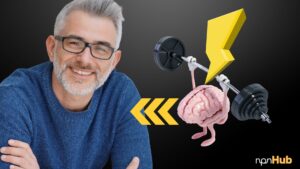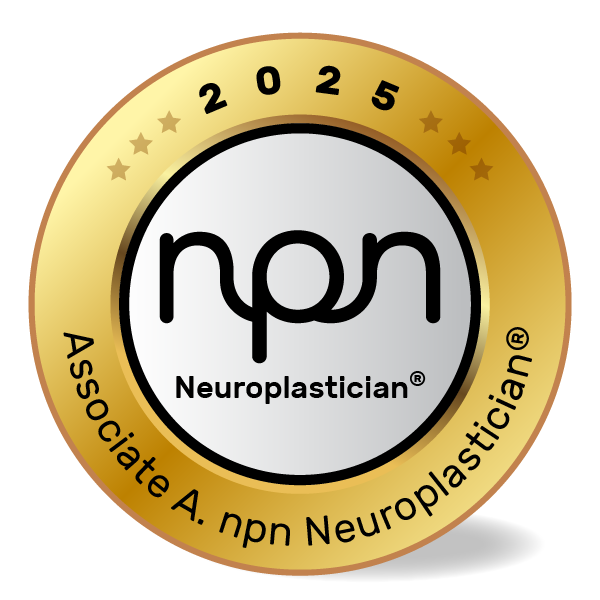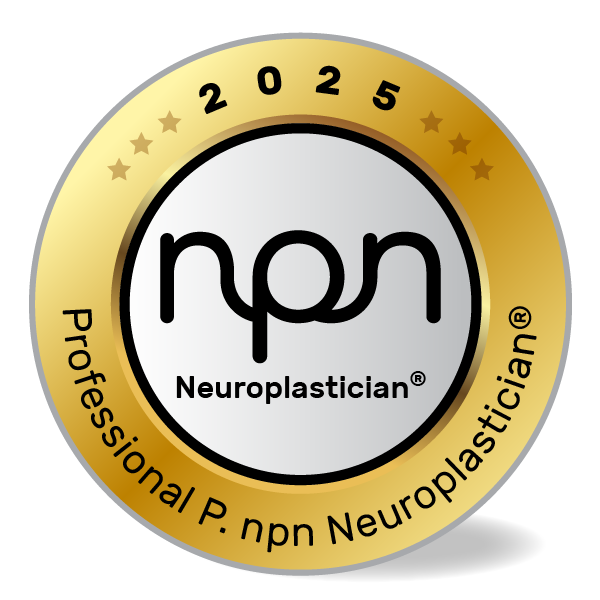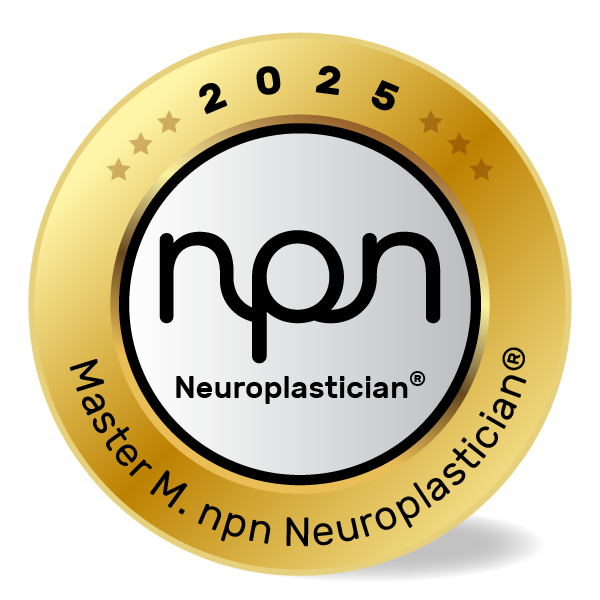Unlocking the Science Behind Reversing Brain Changes and Enhancing Cognitive Function
npnHub Editorial Member: Greg Pitcher curated this blog
Key Points
- Neuroplasticity allows the brain to rewire and adapt across the lifespan, enabling recovery and behavioral change.
- The concept of “turning the brain back” relates to reversing maladaptive patterns or injury effects via targeted interventions.
- Different brain regions and networks play roles in plasticity, including the prefrontal cortex and hippocampus.
- Neuroscience practitioners can harness neuroplasticity through behavioral, cognitive, and environmental strategies to promote healing and growth.
- Common myths about neuroplasticity include the belief that brain changes are always permanent or irreversible.
- Evidence-based interventions, such as mindfulness, cognitive training, and physical exercise, promote adaptive neuroplasticity.
1. What is Neuroplasticity and Can You “Turn Your Brain Back”?
Imagine a neurocoach working with a client struggling to overcome chronic stress and anxiety. Over months of targeted training, the client starts showing improved emotional regulation, better focus, and a reduction in symptoms. It might feel like the brain is “turning back” from a state of dysfunction to one of balance and resilience. While not literally reversing time, neuroplasticity lets the brain reshape itself, often restoring lost functions or forming new, healthier pathways.
This is an illustrative story, not a clinical case, but it reflects a core principle of neuroscience. Neuroplasticity refers to the brain’s ability to reorganize neural connections based on experience, learning, and environment. The term was popularized through decades of research starting from pioneering work by neuroscientists like Michael Merzenich and Donald Hebb. Their studies, supported by advances in brain imaging, have shown the brain is dynamic and adaptable – not static.
Whether recovering from injury, mental health conditions, or simply retraining habits, neuroplasticity holds promise for “turning the brain back” to healthier states by strengthening or weakening specific circuits rather than reversing the brain’s chronological age or history. This nuanced understanding shifts the narrative from “fixed brain” to “malleable brain” (Merzenich, 2013) (NIH Neuroplasticity Overview).
2. The Neuroscience of Turning the Brain Back
In a rehabilitation clinic, a neuroscientist observes a stroke patient who gradually regains motor function through physical therapy. The patient’s brain forms new connections in undamaged areas, compensating for the lost tissue. This clinical example illustrates neuroplasticity’s power to restore abilities through neural rewiring.
At the neural level, plasticity involves changes in synaptic strength – how neurons communicate – via mechanisms like long-term potentiation (LTP) and long-term depression (LTD). Key brain regions involved include the hippocampus (memory formation and learning), the prefrontal cortex (executive functions and decision-making), and sensorimotor areas for physical recovery.
Neurotransmitters such as glutamate play a vital role in synaptic plasticity, while dopamine modulates motivation and reward-based learning. According to neuroscientist Dr. Alvaro Pascual-Leone, targeted stimulation and learning activities can “turn the brain back” by reshaping maladaptive circuits and enhancing functional connectivity between regions.
The brain’s networks dynamically interact: the default mode network adjusts self-referential thought, while attentional networks recalibrate focus. Through repetitive, goal-directed practice, these systems can be remodeled, demonstrating that plasticity is both a structural and functional phenomenon (Pascual-Leone et al., 2011) (NIH Neuroplasticity).
3. What Neuroscience Practitioners, Neuroplasticians, and Well-being Professionals Should Know
Consider a cognitive coach helping a client break free from deeply ingrained negative thought patterns. Early sessions reveal frustration because the client expects instant change, a common myth that brain rewiring happens overnight. The coach explains neuroplasticity’s gradual nature – repeated practice rewires networks over time.
Understanding the timeline and mechanisms of plasticity is crucial for professionals. Neuroplasticity is not magic; it requires consistency, intention, and appropriate challenge. Practitioners often encounter questions like:
- How long does it take to “turn the brain back” from maladaptive patterns?
- Can neuroplasticity reverse structural brain changes caused by trauma or aging?
- Are there limits to what neuroplasticity can achieve in adults compared to children?
These questions reflect misconceptions about neuroplasticity’s speed and scope. Research shows adults retain significant plasticity but often need tailored, multimodal approaches integrating cognitive, physical, and emotional training to maximize results. Studies from Harvard and Stanford reinforce that neuroplasticity varies by brain region and individual context, highlighting the need for personalized interventions (Lazar et al., 2005) (Stanford Neuroplasticity Research).
4. How “Turning the Brain Back” Affects Neuroplasticity
When a client repeatedly practices mindfulness meditation, they may observe reduced anxiety and better emotional control over weeks. This repeated behavior strengthens prefrontal regulatory circuits while dampening overactive limbic areas like the amygdala. The brain “turns back” from a stress-dominated state toward calm regulation.
Neuroplasticity is essentially the brain’s ability to change with experience. When maladaptive patterns form – such as chronic stress pathways or addiction circuits – neuroplasticity can weaken these and build healthier alternatives. This rewiring relies on repeated practice that reinforces new synaptic connections, making them stronger and more efficient.
Research by Dr. Helen Neville demonstrated that neuroplastic changes can happen across all brain systems and that experience-dependent plasticity is lifelong, though the extent and speed may slow with age. The key is persistent, intentional behavioral change supported by the environment and mindset (Neville, 2011).
5. Neuroscience-Backed Interventions to Improve Neuroplasticity and “Turn the Brain Back”
Behavioral interventions are essential to guide neuroplasticity toward positive outcomes. The challenge lies in translating brain science into daily practice, helping clients overcome resistance and build new neural pathways.
1. Mindfulness Meditation
Concept: Mindfulness enhances connectivity between the prefrontal cortex and amygdala, improving emotional regulation (Tang et al., 2015).
Example: A well-being coach guides a client in daily mindfulness to reduce stress-related neural hyperactivity.
Intervention:
- Teach daily 10-minute focused breathing exercises.
- Encourage journaling to reflect on emotional changes.
- Integrate mindfulness prompts into routine activities.
2. Cognitive Behavioral Training (CBT)
Concept: CBT reshapes dysfunctional thought patterns by engaging prefrontal and limbic circuits (Beck, 2011).
Example: A neurocoach supports a client in identifying and challenging negative automatic thoughts.
Intervention:
- Use thought records to track cognitive distortions.
- Practice reframing exercises regularly.
- Reinforce progress with positive feedback.
3. Physical Exercise
Concept: Aerobic exercise promotes neurogenesis in the hippocampus and enhances synaptic plasticity (Erickson et al., 2011).
Example: A practitioner designs a walking routine to support cognitive recovery after mild brain injury.
Intervention:
- Encourage 30 minutes of moderate exercise most days.
- Combine physical activity with cognitive tasks for dual benefits.
- Monitor progress and adjust intensity for engagement.
4. Brain Stimulation Techniques (e.g., tDCS)
Concept: Non-invasive brain stimulation can modulate cortical excitability and enhance plasticity (Pascual-Leone et al., 2011).
Example: A neuroplastician incorporates tDCS sessions alongside cognitive training for stroke recovery.
Intervention:
- Use tDCS to target affected motor or cognitive areas.
- Pair stimulation with task-specific practice.
- Track outcomes and adjust protocols as needed.
By applying these interventions, neuroscience practitioners can actively support clients’ brains in “turning back” maladaptive patterns toward functional and adaptive states.
6. Key Takeaways
The brain is a remarkable, plastic organ capable of rewiring itself in response to experience. While you cannot literally turn back time in your brain, neuroplasticity allows you to reverse maladaptive changes and build healthier neural networks. This process requires intentional, consistent practice and often a multimodal approach combining cognitive, emotional, and physical strategies.
Understanding neuroplasticity empowers neuroscience practitioners and well-being professionals to foster resilience, recovery, and growth in their clients. By debunking myths and applying neuroscience-backed interventions, the brain’s capacity for change can be harnessed throughout life.
- Neuroplasticity enables functional recovery and cognitive enhancement.
- Repeated, goal-directed behaviors strengthen adaptive neural pathways.
- Personalized interventions optimize brain rewiring potential.
- Practitioners play a critical role in guiding neuroplastic change.
The brain is never fixed – it’s soft wired and ready to grow.
7. References
- Merzenich, M. M. (2013). Soft-Wired: How the New Science of Brain Plasticity Can Change Your Life. Parnassus.https://lindagraham-mft.net/soft-wired-how-the-new-science-of-brain-plasticity-can-change-your-life/
- Pascual-Leone, A., Amedi, A., Fregni, F., & Merabet, L. B. (2011). The Plastic Human Brain Cortex. Annual Review of Neuroscience, 28, 377–401.https://pubmed.ncbi.nlm.nih.gov/16022601/
- Erickson, K. I., et al. (2011). Exercise training increases size of hippocampus and improves memory. PNAS, 108(7), 3017-3022.https://pubmed.ncbi.nlm.nih.gov/21282661/
- Neville, H. (2011). Experience-dependent Plasticity Across Brain Systems. https://pubmed.ncbi.nlm.nih.gov/12432770/
- Lazar, S. W., et al. (2005). Meditation experience is associated with increased cortical thickness. NeuroReport, 16(17), 1893–1897.https://pmc.ncbi.nlm.nih.gov/articles/PMC1361002/
- Tang, Y. Y., et al. (2015). The neuroscience of mindfulness meditation. Nature Reviews Neuroscience, 16(4), 213–225.https://www.nature.com/articles/nrn3916
- Beck, J. S. (2011). Cognitive Behavior Therapy: Basics and Beyond (2nd ed.). Guilford Press.https://img3.reoveme.com/m/be38edbbfc79330a.pdf















